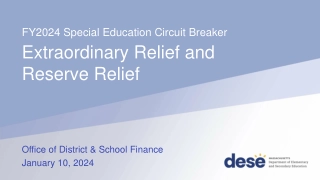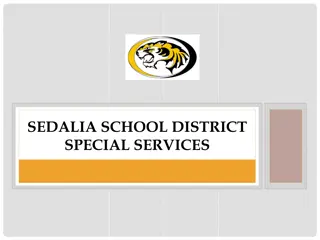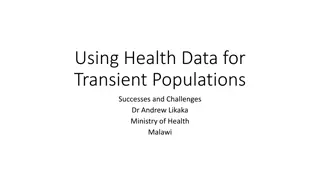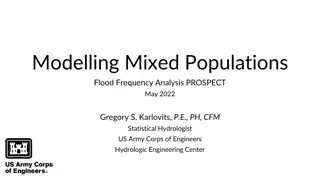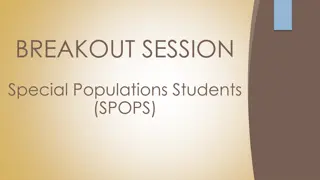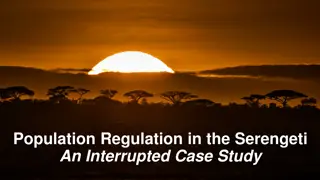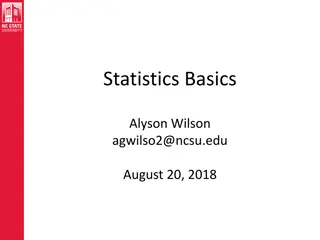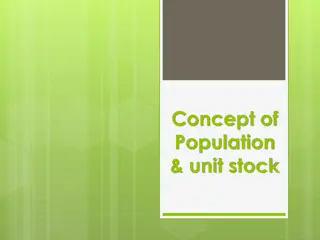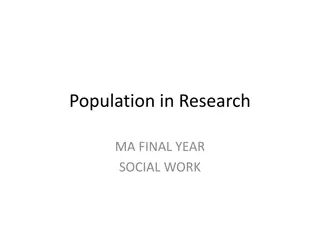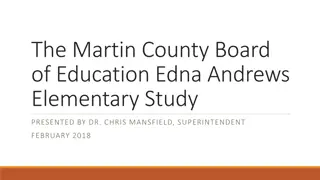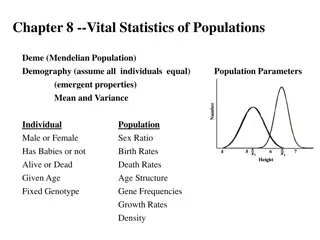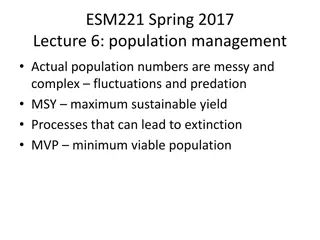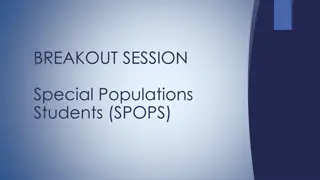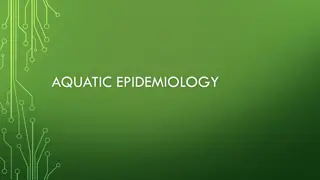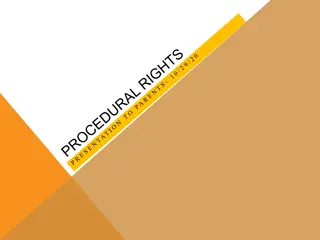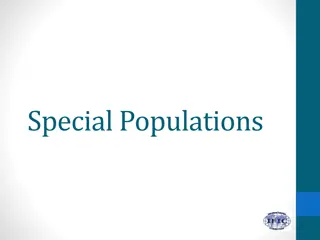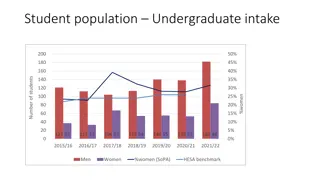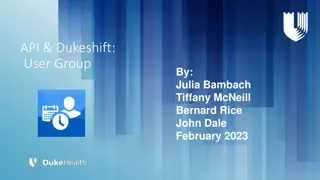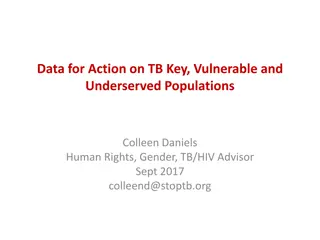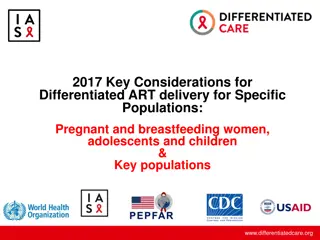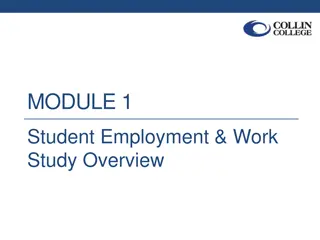Student Services and Special Populations Overview
In the realm of education, it's crucial to understand and cater to special populations like individuals with disabilities, economically disadvantaged students, those in non-traditional fields, single parents, and more. Laws such as the ADA and IDEA ensure equal opportunities for all. With a focus on Individualized Education Plans (IEPs), educators strive to provide appropriate services to students in need to promote inclusivity and accessibility.
Download Presentation

Please find below an Image/Link to download the presentation.
The content on the website is provided AS IS for your information and personal use only. It may not be sold, licensed, or shared on other websites without obtaining consent from the author.If you encounter any issues during the download, it is possible that the publisher has removed the file from their server.
You are allowed to download the files provided on this website for personal or commercial use, subject to the condition that they are used lawfully. All files are the property of their respective owners.
The content on the website is provided AS IS for your information and personal use only. It may not be sold, licensed, or shared on other websites without obtaining consent from the author.
E N D
Presentation Transcript
Student Services and Special Populations: What You Need to Know Katlyn Hudgins, M.Ed., CCC Kari Stomprud, M.Ed. Career Development Coordinator Special Populations Special Needs Coordinator Oklahoma Department of Career & Technical Education Canadian Valley Technology Center
What are Special Populations? >Disabilities >Economically Disadvantaged >Non-Traditional Fields >Single Parents >Homeless >English Learners >Out-of-Workforce >Foster Care >Student with a Parent in the military
How does working with special populations affect me? Special Ability to provide appropriate services Populations are in every single program! Greater understanding Best serve students!
>The Americans with Disabilities Act of 1990 (ADA) prohibits discrimination and ensures equal opportunity for persons with disabilities in employment, State and local government services, public accommodations, commercial facilities, and transportation. ADA
Individuals with Disabilities Education Act (IDEA) >13 Categories of Disability under IDEA Specific Learning Disability (SLD) Other Health Impairment Autism Spectrum Disorder (ASD) Emotional Disturbance Speech or Language Impairment Visual Impairment (including blindness) Deafness Hearing Impairment Deaf-Blindness Orthopedic Impairment Intellectual Disability Traumatic Brain Injury (TBI) Multiple Disabilities >The Individuals with Disabilities Education Act (IDEA) is a law that makes available a free appropriate public education (FAPE) to eligible children with disabilities throughout the nation and ensures special education and related services to those children. >Children and youth ages 3 through 22 receive special education and related services under IDEA Part B.
Individualized Education Plan (IEP) >To ensure that students can receive appropriate services under IDEA, support staff utilizes an Individualized Education Program (IEP). >These students fall under at least one of the 13 categories AND their performance is affected due to a disability >A legal document that outlines the special education program for a student with a disability. This document is developed, reviewed, and revised annually by a team including: Parents Teachers Special Education Teacher CareerTech Instructor School Administrator Others as determined appropriate by the team. Special Populations Handbook >The purpose of the IEP is to outline a series of specific actions and steps where educational providers, parents, and the student themselves may reach the child's stated goals. >If a parent is concerned that an IEP is inappropriate for their child, or that their child is not receiving needed services, they have the right under IDEA to challenge their child's treatment, which is known as due process. APA
Section 504 >Section 504 is part of the Rehabilitation Act, which allows individuals with disabilities to receive necessary accommodations in their specific CareerTech program. - OK Secondary Transition Handbook. >Section 504 is designed to prevent those with a disability, who do not need specialized instruction, against discrimination. >If a student wishes to receive accommodations in postsecondary education, then they must disclose the disability.
Examples of 504 Services >Supplemental Aids and Services >Reasonable Accommodations >Speech and Language Therapy >Interpreters >Physical Therapy >Note Takers >Occupational Therapy >Priority Registration >Counseling >Specialized Instruction >Recorded Lectures >Extended Test time >Classroom and testing accommodations and modifications >Assistive Technology >Accessible Educational Materials
>Accommodations: Adjustments to curriculum, instruction, or procedures to allow students with disabilities to participate and have access to content and instruction. An accommodation does not alter the content or expectations. >Accommodations for testing can be different from those used for teaching. For example, using spellcheck might help a student with writing difficulties take notes during class. However, it wouldn t be appropriate during a weekly spelling test. Instead, a student might benefit from having extra time to complete the spelling test or use a keyboard if the physical act of writing is difficult. >Modification: Changes that provide a student access to a program, but with lower expectations. >Modifications in testing often mean that a student covers less material or material that is less complex. For example, a spelling test may require the class to study 20 words. However, a student with modifications might only have to study 10 of them. Or, there might be two different lists of spelling words. - Understood
Family Educational Rights and Privacy Act (FERPA) >Federal law that protects the privacy of student education records (20 U.S.C. 1232g; 34 CFR Part 99). >Gives parents certain rights with respect to their children's education records. >Rights transfer to the student when he or she reaches the age of 18 or attends a school beyond the high school level. >Students to whom the rights have transferred are "eligible students." >The law applies to all schools that receive funds under an applicable program of the U.S. Department of Education.
Under FERPA, Information can be released without notifying the parent or student for the following situations: > In an emergency to protect health and safety of students or others > To personnel who have legitimate educational interest > For auditing purposes > Appropriate parties involved with a student s financial aid > Officials of another school where the student seeks to enroll > State and local juvenile justice system > Court orders or subpoenas
FAQS about FERPA Cont > Are schools required to record the disclosure of personally identifiable information (PII) from students education records whenever they make disclosures? Schools must maintain a record of each request for access to, and each disclosure of PII from, the education records of each student, as well as the names of state and local educational authorities and federal officials and agencies However, schools do not have to record disclosures of PII from education records that were made to: 1) the parent or eligible student 2) a school official 3) a party with written consent from the parent or eligible student 4) a party seeking directory information 5) a party seeking or receiving records related to disclosures of subpoenas or court orders.
FAQS about FERPA Cont >Are there any limitations to sharing information based on personal knowledge or observations? FERPA does not prohibit a school official from releasing information about a student that was obtained through the school official s personal knowledge or observation unless that knowledge is obtained through his or her official role in making a determination maintained in an education records about the student. For example, under FERPA a principal or other school official who took official action to suspend a student may not disclose that information, absent consent or an exception under 99.31 that permits the disclosure.
Friendly Reminders about Confidentiality: Faculty & Staff > Each administrator is responsible to ensure all special education records are maintained in a confidential manner and stored in a private area. > Discussions concerning confidential information are to take place in secured locations (not hallways, staff lounges, parking lots, Wal-Mart, or anywhere others may overhear). > Should not be left as a message with a secretary or on a voicemail. > Be careful using e-mail to discuss confidential information (remember all e-mail can be subpoenaed). > All staff members should be held to the same standard of confidentiality. schoolcounselor.org
Confidentiality and Communication Cont >Casual conversations with colleagues about a student with a disability is inappropriate. Appropriate staff to know: Student s Instructor Disability Support Specialist Counselor Administrator if there is a valid reason
Communication with Students >When making appointments with students over the phone, try not to repeat their name >Discussion of a student keep their name anonymous >If a student wishes for staff and students to know that they have a disability, make sure it is in writing first! >Help them to understand FERPA and put it in layman s terms >Do not assume that other students with a disability know who their peers are with a disability >What to do when you are the student s person ?
Referrals >When is it appropriate? >Do you have a licensed counselor on staff? >Do you have written from the student or parent/guardian to send a referral?
Ask yourself: Why am I sharing this information? How will it benefit the student?
Good rule to follow . . . Do not write or say anything you would not want to be repeated in a due process hearing, in front of your superintendent, the student and their parents.
>Think Synergy, not silos! >Connect with the staff at sending schools that have the same/similar role as you and share information. >Create an excel sheet or directory of important contacts >Invite your sending school staff to events at your tech center to showcase what CareerTech is all about! >If you are on an IEP team, offer to host IEP meetings at the tech center. >Boost morale by focusing on student success and inform parents of opportunities to see what their child is doing and opportunities for prospective students. How to Build Partnerships
Katlyn Hudgins, M.Ed., CCC Kari Stomprud, M.Ed. Career Development Coordinator Special Populations Special Needs Coordinator Oklahoma Department of Career & Technical Education Canadian Valley Technology Center El Reno Katlyn.Hudgins@careertech.ok.gov kstomprud@cvtech.edu 405-743-5596 405-422-2284


